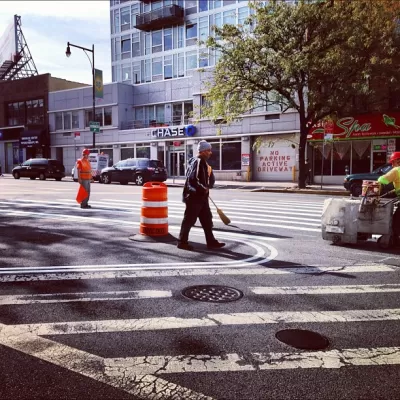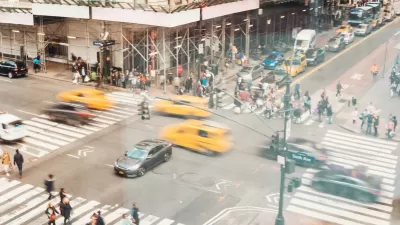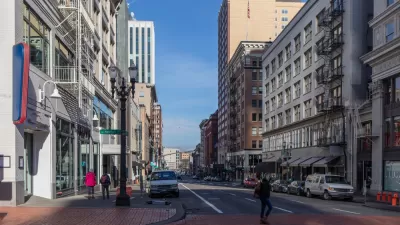Around the world, car crashes are the tenth leading cause of death, and while the United States is spending money on transportation, that money isn't making the roads safer.

The World Resources Institute joined with the World Bank to create a report on traffic deaths around the world. "Despite having more resources to tackle road redesigns and reduce traffic fatalities, the United States isn’t keeping up with many of its peer nations when it comes to creating safer streets," Patrick Sisson reports for Curbed.
The problem isn't a lack of knowledge about what works to make the roads safer, those measures are well-documented. "Lowering driving speeds to reduce fatal accidents; designing safer crossings, roadways, and sidewalks to make travel safer for pedestrians and cyclists; building safer infrastructure, such as roundabouts, and funding more public transportation," Sisson reports.
There are bright spots. When Vision Zero plans are undertaken seriously, and not in name only, cities around the country have seen results. "U.S. planners have a tool kit that’s worked in other countries, says Welle, proven solutions that can aid in the effort to reduce traffic fatalities: fixing and adding sidewalks, roundabouts, and bike lanes; initiating traffic calming measures; funding more high-quality public transport; legislating for safer vehicles; and funding faster emergency room response," Sisson writes.
FULL STORY: Global traffic study suggests U.S lagging behind peers in road safety

Alabama: Trump Terminates Settlements for Black Communities Harmed By Raw Sewage
Trump deemed the landmark civil rights agreement “illegal DEI and environmental justice policy.”

Study: Maui’s Plan to Convert Vacation Rentals to Long-Term Housing Could Cause Nearly $1 Billion Economic Loss
The plan would reduce visitor accommodation by 25% resulting in 1,900 jobs lost.

Why Should We Subsidize Public Transportation?
Many public transit agencies face financial stress due to rising costs, declining fare revenue, and declining subsidies. Transit advocates must provide a strong business case for increasing public transit funding.

Wind Energy on the Rise Despite Federal Policy Reversal
The Trump administration is revoking federal support for renewable energy, but demand for new projects continues unabated.

Passengers Flock to Caltrain After Electrification
The new electric trains are running faster and more reliably, leading to strong ridership growth on the Bay Area rail system.

Texas Churches Rally Behind ‘Yes in God’s Back Yard’ Legislation
Religious leaders want the state to reduce zoning regulations to streamline leasing church-owned land to housing developers.
Urban Design for Planners 1: Software Tools
This six-course series explores essential urban design concepts using open source software and equips planners with the tools they need to participate fully in the urban design process.
Planning for Universal Design
Learn the tools for implementing Universal Design in planning regulations.
Caltrans
Smith Gee Studio
Institute for Housing and Urban Development Studies (IHS)
City of Grandview
Harvard GSD Executive Education
Toledo-Lucas County Plan Commissions
Salt Lake City
NYU Wagner Graduate School of Public Service





























